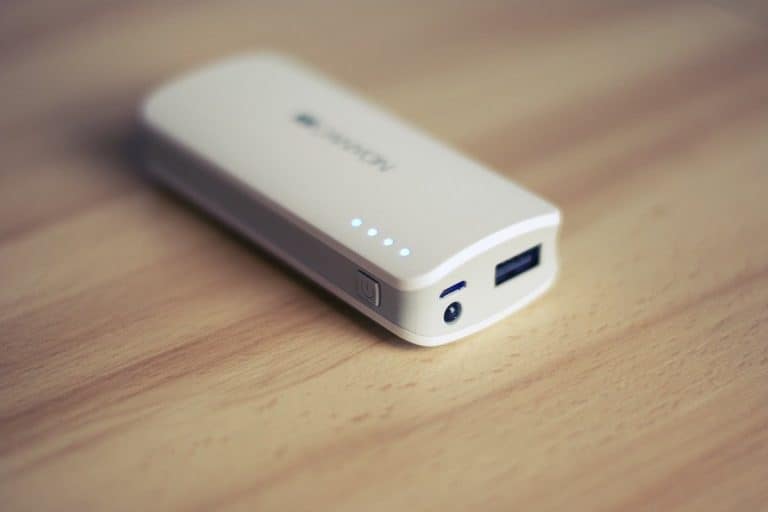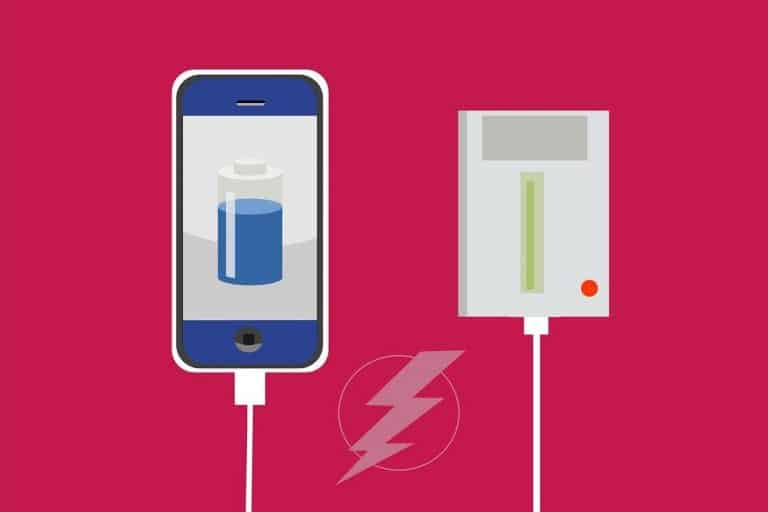Can You Charge a Power Bank while Using It?
You can charge a power bank while using it to charge another device, but this is only possible with a power bank equipped with the pass-through function. Even then, there’s still a risk of battery damage, and you should use this function only when no other option is available.
Many people who travel a lot and have to use their smartphones frequently use portable power banks to ensure that they always have a power source at hand. Still, both the phone and the power bank could be low on power with only one wall outlet available. Could you charge your power bank while simultaneously charging the phone?
In this article, I’ll explore how power banks work with and without the pass-through function. I’ll also cover possible issues you may encounter even when using a power bank with pass-through technology.
Power Banks Without Pass-Through Charging
Before looking at the state-of-the-art technology needed to allow a power bank to charge while recharging another device, let’s look at some of the standard power bank technology.
The Emergence of the Power Bank
The original concept of a power bank was showcased in 2001 by a group of students at the Las Vegas International Consumer Electronics Show. They used AA batteries with a simple control circuit to prove that you could charge a mobile phone with batteries.
Since then, power banks have been developed to provide a trusted power source when your smartphone or other device runs out of power and you’re not near a wall outlet to recharge it.
A power bank’s modern design allows it to charge from a wall outlet or computer USB port. Power bank manufacturers use lightweight and long-lasting lithium-ion or lithium-ion-polymer batteries to store the charge.
Why Some Power Banks Cannot Be Charged While in Use
The first portable power banks were developed and marketed in the early 2000s. These were small devices that could be charged at a wall outlet beforehand and then taken with you as an emergency power source for your mobile phone.
In the beginning, the main feature was that the power bank could keep its charge for a relatively long period for later use. Mobile phones were much simpler and, without the myriad apps and slim design of modern phones, their batteries lasted much longer. Power banks were generally a back-up for exceptional circumstances when away from a wall outlet for some time.
As a battery can’t charge and discharge simultaneously because current can flow only in one direction at a time, the early developers accepted that a power bank could only be either in the process of being charged or in the process of replenishing another device’s battery.
It was not as necessary in the early years to develop a feature allowing a power bank to be charged while recharging another device. Thus, if you have an older power bank or have bought a less expensive one recently, the chances are good that your power bank cannot be charged when in use.
Smartphones and Pass-Through Charging Demand
After the iPhone launch in 2007 with its combination of a phone, a widescreen iPod, and an internet communications device with email and web browsing facilities, smartphones started to become an “office on the go” (source).
Today’s smartphones are far more than just phones, and as more and more apps have been developed, so they are in use more often. Phones’ batteries have started to discharge more quickly and have to be recharged more frequently — sometimes even more than once a day.
According to Statistica, there are now 275 million smartphones in the United States (source). It’s little wonder, then, that the recharge facilities at public places are often crowded with people recharging their smartphones.
Power banks have become more popular as smartphone users have increasingly decided to be less dependent on available wall outlets when on the move. Using one to charge your phone is safe, they won’t damage your batteries.
The problem comes when you are using your power bank during the day to keep your smartphone working and find yourself in the position that you urgently need to recharge your smartphone again, but your power bank doesn’t have enough stored charge left to do so.
You find a wall outlet and ideally want to charge your phone via the power bank and simultaneously recharge your power bank so that it’s ready for the next time you need it. This is made possible through pass-through technology.
Pass-Through Charging Technology
Power bank manufacturers became aware of the need to have power banks that can be charged while replenishing another device. This led to the development of a sophisticated electronic technique known as the pass-through feature.
In essence, it involves the power bank’s ability to match the draw of energy needed by an output device to the amps being received from a wall outlet. The process is called prioritization.
In layman’s terms, what happens is that some power from the wall outlet is directed to the power bank’s own battery to charge and store charge, and some of it is channeled directly to the connected device.
As the power to the connected device is not sent via the power bank’s battery, the principle that a battery can only either charge or discharge at a specific time stays in place. The power bank’s ability to prioritize correctly how much power goes where determines the efficiency of the power bank.
Things to Keep in Mind
When you charge your power bank while using it, it slows down its recharge speed and lengthens the connected device’s charging time, so it won’t save you time to do both at once. However, if the situation only requires a partial charge in a short time, the pass-through method can be very efficient.
If the charge output expected from the power bank is larger than the percentage of power the bank is allowing itself for its own recharging, the power bank will also make use of any already stored charge to replenish the device. You could end up with a power bank with less charge than when you started.
Most modern power banks are equipped with a light or meter to indicate when it is using stored charge. In this case, it is preferable to disconnect and rather recharge either the phone or the power bank.
Although the pass-through charging feature has been in use for a couple of years now, and manufacturers’ technical divisions are continuously improving the system, it is not entirely without risk to use it.
Overheating can become a problem if you charge your power bank when it is in use. The overheating can be so acute that it also causes battery degradation. Damaging heat normally builds up the longer something takes to charge.
If you use a power bank manufactured by a reputable company, this is less likely to happen because leading brands develop their power banks with fail-safe circuitry that prevents overcharging and overheating (source).
The big brands all offer various power bank models, some with and some without pass-through technology. If it’s an important feature for your usage, then there are models from industry leaders like Mophie, RAVPower, Zendure, Moshi, Aukey, Xiaomi, and others that all support this technology.
Interestingly, Anker power banks do not support pass-through technology because of issues with battery degradation (source).
To minimize the risk of device or battery damage and degradation, it is best to utilize the pass-through feature only in emergencies. Even if your power bank is equipped with the pass-through charging feature, it is always safer to charge it when not in use.
As with all electronic devices, keep your power bank away from heat sources and water. Only use the connecting cables provided with the bank or the device to be recharged, and don’t leave your power bank in the wall outlet after it has been fully charged (source).
Investing in a Power Bank
If you are considering buying a power bank, first consider what features are important to you. Depending on your needs, you may wish to prioritize weight, size, charge capacity, charge speed, number of ports, or pass-through charging in your purchase.
To protect your devices and their batteries, look for a power bank manufacturer that guarantees that its product protects devices against over-current, overcharging, short circuit, and voltage surge. Always read the pamphlet and don’t believe the salesperson!
There are power banks available that have an automatic switch-off mechanism when the battery is fully charged. With this mechanism, your power bank will not be damaged if it has been left in the wall outlet overnight. Make sure you read our article, “Can Power Banks Destroy Phone Batteries?”
It is always good to stick to well-known or recommended brands that have been successfully used by people whose technical knowledge you trust.
Final Thoughts
Many modern power banks can be charged while in use, and there are certainly occasions when this is useful. However, it is always better to rather charge your power bank separately, keep it fully charged, and use the pass-through function only when absolutely necessary because of the potential risks in using it.
It’s also essential to always use a power bank made by a reputable manufacturer to minimize the risks to your device.







